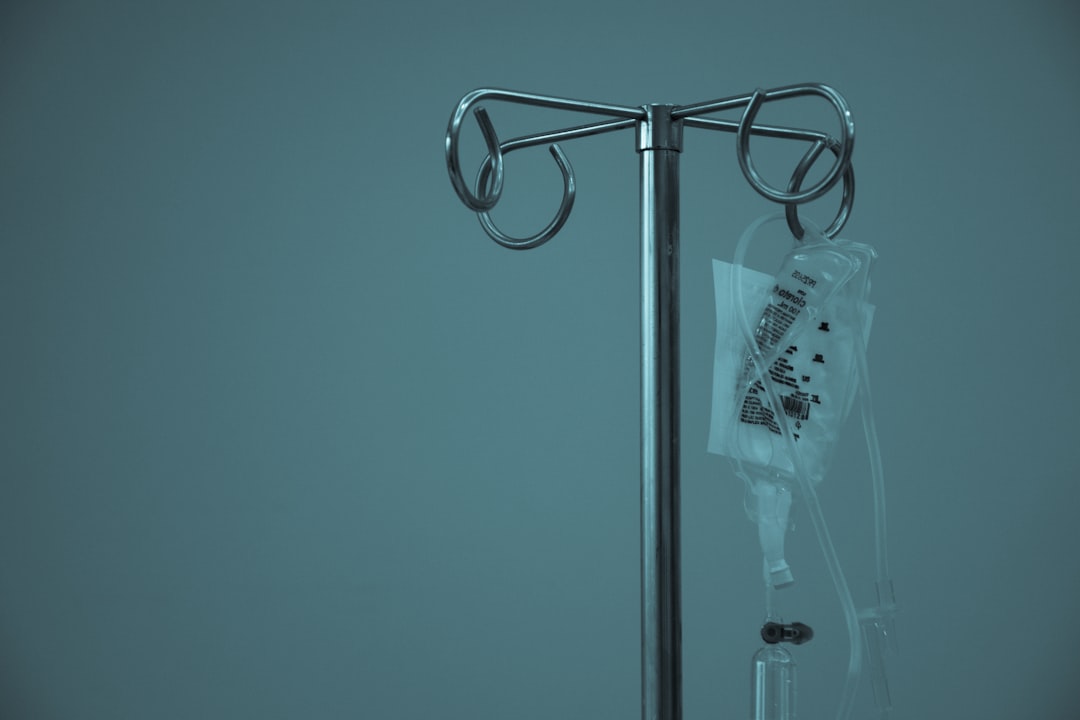Common Types of Medication Errors
Medication errors are a significant concern in healthcare, posing risks to patient safety and clinical outcomes. These errors can occur at various stages of the medication process, from prescribing to administration. Understanding common types of medication errors is crucial for healthcare professionals to implement effective strategies to prevent them.
One prevalent type of medication error is prescription errors. This category includes mistakes made by prescribers when writing the medication order. Errors can stem from incorrect drug selection, inaccurate dosages, or unsuitable routes of administration. For instance, a physician might prescribe a higher dose than necessary due to miscalculation or overlook potential drug interactions with the patient's current medications. Handwriting legibility can also contribute; illegible prescriptions may be misinterpreted by pharmacists, leading to dispensing the wrong drug or dosage.
Dispensing errors represent another common category and occur primarily within pharmacies. These mistakes happen when pharmacists or pharmacy technicians incorrectly fill a prescription. Similar-sounding drug names (e.g., hydroxyzine vs. hydralazine) often cause confusion, resulting in patients receiving the wrong medication. Additionally, packaging similarities between different drugs can lead to mix-ups during dispensing.
Administration errors take place when there is a deviation from the prescribed regimen while giving medication to patients. This can include incorrect timing (administering too early or too late), wrong route (oral instead of intravenous), and improper dose administration (too much or too little). In busy hospital settings, nurses might accidentally administer medications intended for one patient to another if they do not double-check patient identifiers diligently.
Monitoring and documentation errors also contribute significantly to medication mishaps. Failing to review patient history thoroughly before prescribing new drugs can result in adverse reactions or contraindications being overlooked. Inadequate documentation practices further exacerbate this issue; incomplete medical records may lead providers to make uninformed decisions regarding patient care.
Lastly, omission errors occur when required medications are not administered at all-a scenario that could be as detrimental as administering an incorrect drug or dose. Omissions might arise from communication failures within the healthcare team, lack of knowledge about the patient's needs, or simple human forgetfulness.
In conclusion, common types of medication errors-prescription errors, dispensing errors, administration errors, monitoring/documentation mistakes, and omission errors-pose serious threats to patient safety and treatment efficacy. By recognizing these error types and understanding their root causes, healthcare professionals can devise targeted interventions such as better training programs, robust electronic prescribing systems, improved communication protocols, and stringent double-check procedures to minimize these risks and enhance overall patient care quality.
Causes and Risk Factors
Medication errors are a significant concern in healthcare systems worldwide. These errors can lead to adverse drug events, compromise patient safety, and contribute to increased healthcare costs. Understanding the causes and risk factors associated with medication errors is crucial for developing strategies to prevent them.
One of the primary causes of medication errors is human error. Healthcare professionals, including doctors, nurses, and pharmacists, are often under considerable pressure due to heavy workloads and time constraints. This stress can lead to lapses in concentration, fatigue, and ultimately mistakes in prescribing, dispensing, or administering medications. For instance, a tired nurse might misread a prescription or administer the wrong dosage of a drug.
Communication breakdowns also play a pivotal role in medication errors. Ineffective communication between healthcare providers can result in misunderstandings about medication orders or patient information. For example, if a physician's handwriting is illegible or verbal instructions are not clearly understood by nursing staff, it could lead to the administration of incorrect medications or dosages.
Another significant factor contributing to medication errors is inadequate knowledge about medications among healthcare providers. Medical professionals must stay abreast of constantly evolving drug information, including new pharmaceuticals and changing guidelines for existing drugs. Lack of knowledge or outdated information can result in inappropriate prescribing practices or failure to recognize potential drug interactions.
The complexity of healthcare systems further exacerbates the risk of medication errors. In hospitals and clinics where multiple medications are administered to patients daily, there is an increased likelihood of errors occurring at various stages-from prescribing and transcribing to dispensing and administration. In addition, similar-sounding names or look-alike packaging for different drugs can easily confuse even experienced professionals.
Technological issues also contribute significantly to medication errors despite advancements aimed at reducing them through electronic health records (EHRs) and computerized physician order entry (CPOE) systems. Technical glitches such as software malfunctions or user interface problems can introduce new types of errors into the system when data entry fields are misinterpreted or automated alerts are ignored due to alert fatigue.
Patient-related factors cannot be overlooked either when considering causes for medication errors. Elderly patients who may have multiple chronic conditions often take several medications simultaneously (polypharmacy), thereby increasing their susceptibility to adverse events arising from potential drug interactions or cumulative side effects from high doses accidentally taken together.
Socioeconomic factors like inadequate access to quality care also come into play here; marginalized communities may experience higher rates owing largely because they receive less comprehensive consultations leading towards insufficient understanding regarding proper usage instructions provided by caregivers unfamiliar with specific cultural contexts influencing adherence behaviors prevalent among these groups disproportionately affected compared against mainstream populations enjoying privileged positions socioeconomically speaking overall within society structures globally observed today increasingly interconnected via digital networks facilitating rapid dissemination information exchange unprecedented levels previously unimaginable historically considered science fiction realms mere decades ago now routine everyday occurrences shaping future technological landscapes unfolding before very eyes witnessing firsthand transformative impact technology continues exert upon lives everywhere dawn 21st century progresses inexorably forward toward unknown horizons yet explored promising boundless opportunities discover innovate improve humanity collectively striving achieve common goals shared vision better world generations come benefit fruits labor invested endeavors present times facing challenges head-on courage determination unwavering resolve see things through successful outcomes achieved ultimately desired results attained triumphant conclusion end journey embarked upon together united purpose driving force behind relentless pursuit excellence every step way overcoming obstacles encountered along path forged daring spirit adventure unyielding quest knowledge enlightenment wisdom gained experiences accumulated accumulated throughout ages passed down legacy preserved perpetuity enduring testament resilience fortitude perseverance human spirit indomitable essence defining characteristic truly remarkable species planet earth unique universe vastness infinite
Impact on Patient Health and Safety
Medication errors have long been a critical issue within the realm of healthcare, posing significant risks to patient health and safety. These errors can occur at various stages of the medication process, including prescribing, dispensing, administering, and monitoring. The consequences can range from minor inconveniences to severe health complications or even death.
At the core of this issue is the potential for adverse drug events (ADEs), which are injuries resulting from medical intervention related to a drug. ADEs can arise from incorrect dosages, wrong medications being administered, or improper methods of administration. When such errors occur, patients may suffer from side effects that could have been prevented with proper care and attention. For example, an overdose of a blood thinner like warfarin can lead to excessive bleeding, while an underdose might fail to prevent life-threatening clots.
Moreover, medication errors significantly impact patient trust in the healthcare system. Patients expect that their healthcare providers will administer treatments safely and effectively. When errors occur, this trust is eroded, leading to increased anxiety and reluctance to seek medical help in the future. In a community where trust is paramount for effective healthcare delivery, such breaches can have far-reaching implications.
The financial burden resultant from medication errors cannot be overlooked either. Hospitals and clinics often face additional costs stemming from extended hospital stays due to complications arising from these mistakes. Additional diagnostic tests and treatments required to correct these errors further strain already limited resources within healthcare systems worldwide.
One of the most devastating impacts of medication errors is on vulnerable populations such as children and the elderly. These groups are often more susceptible to adverse effects due to physiological differences that affect drug metabolism and sensitivity. For instance, pediatric patients may experience heightened reactions due to their smaller body size and developmental stage, while older adults might face compounded risks because of multiple chronic conditions requiring complex medication regimens.
Addressing this pervasive issue requires a multifaceted approach focused on enhancing communication among healthcare professionals, implementing robust electronic health records (EHR) systems with integrated decision support tools, continuous education on best practices for medication management, and fostering a culture that prioritizes patient safety over punitive measures when errors do occur.
In conclusion, medication errors represent a profound challenge in safeguarding patient health and safety within healthcare settings. The repercussions extend beyond immediate physical harm to include emotional distress for patients and families as well as economic strains on healthcare institutions. By adopting comprehensive strategies aimed at prevention and early detection of these errors, we can move closer towards ensuring that every patient receives safe and effective treatment tailored to their unique needs.
Strategies for Prevention and Reduction
Medication errors are a significant concern in healthcare systems worldwide, posing serious risks to patient safety and well-being. These errors can occur at any stage of the medication process, from prescribing and dispensing to administering and monitoring. To mitigate these risks, it is crucial to implement effective strategies for prevention and reduction. This essay will explore several key strategies that healthcare providers can adopt to minimize medication errors.
One of the fundamental strategies for reducing medication errors is the implementation of robust electronic health records (EHR) systems. EHRs can significantly enhance the accuracy of information by providing a comprehensive and accessible record of a patient's medical history, medications, allergies, and other critical data. This reduces the likelihood of errors caused by incomplete or inaccurate information. Additionally, EHRs often include decision support tools that alert providers to potential drug interactions, allergies, and dosing errors.
Another critical strategy is improving communication among healthcare professionals. Medication errors often stem from miscommunication between doctors, nurses, pharmacists, and other healthcare providers. Implementing standardized communication protocols such as SBAR (Situation-Background-Assessment-Recommendation) can ensure that important information is accurately conveyed during handoffs and consultations. Regular multidisciplinary team meetings can also facilitate better communication and collaboration among different members of the healthcare team.
Education and training are also vital components in preventing medication errors. Healthcare providers must receive ongoing education on safe medication practices, including proper dosage calculations, administration techniques, and error reporting procedures. Simulation-based training programs can provide practical experience in managing complex medication scenarios without risking patient safety. Encouraging a culture of continuous learning helps keep staff updated on best practices and emerging trends in medication safety.
In addition to education for healthcare professionals, involving patients in their own care is another powerful strategy for reducing medication errors. Educating patients about their medications-how they should be taken, possible side effects, and what to do if an error occurs-empowers them to be active participants in their treatment plans. Clear labeling on prescription bottles and easy-to-understand written instructions can further aid patients in managing their medications correctly.
Another essential approach is implementing double-check systems for high-risk medications or complex cases. For instance, requiring two healthcare professionals to independently verify the correct drug, dose, route of administration, and patient identity before administering certain medications can catch many potential errors before they reach the patient.
Moreover, fostering a non-punitive culture where healthcare workers feel comfortable reporting near-misses or actual medication errors without fear of retribution is crucial for systemic improvement. Reporting systems should be designed to analyze reported incidents thoroughly to identify root causes and develop targeted interventions that prevent recurrence.
Finally, leveraging technology such as barcode scanning during dispensing and administration can greatly enhance accuracy by ensuring that the right drug reaches the right patient every time. Automated dispensing cabinets (ADCs) with integrated safeguards can further reduce human error by controlling access to medications based on real-time prescription data.
In conclusion, preventing and reducing medication errors requires a multifaceted approach that incorporates technology integration like EHRs and barcode scanning; improved communication; continuous education; active patient involvement; double-check systems; a supportive reporting culture; and advanced dispensing technologies like ADCs. By adopting these comprehensive strategies collectively across various levels of care delivery settings-from hospitals to outpatient clinics-healthcare providers can significantly enhance patient safety outcomes related to medication management.
Role of Healthcare Professionals in Minimizing Errors
Medication errors represent a significant concern in healthcare, often leading to adverse patient outcomes and increased healthcare costs. The role of healthcare professionals in minimizing these errors cannot be overstated. From physicians to pharmacists, nurses to allied health workers, each plays a crucial part in ensuring the safe administration of medications.
First and foremost, accurate prescribing is essential. Physicians must exercise diligence in selecting appropriate medications, considering patient history, potential drug interactions, and correct dosages. The use of electronic prescribing systems can aid this process by providing checks against known allergies and contraindications. However, technology alone is not a panacea; the physician's clinical judgment remains paramount.
Pharmacists play an indispensable role as gatekeepers of medication safety. Their expertise in pharmacology allows them to review prescriptions for potential errors or harmful interactions before dispensing. Pharmacists also serve as educators for both patients and other healthcare providers, offering guidance on proper medication use and highlighting any concerns that might arise from new drug therapies.
Nurses are often the final link in the medication administration chain. Their responsibilities include verifying medications against medical records, ensuring correct dosages are given at the right times, and monitoring patients for adverse reactions. The implementation of barcode scanning systems has significantly reduced administration errors by confirming patient identity and prescribed treatment before medication delivery.
Collaboration among healthcare professionals is vital for minimizing medication errors. Regular interdisciplinary meetings can foster open communication about potential risks and facilitate the development of strategies to mitigate them. For instance, creating standardized protocols for high-risk drugs can help ensure consistency and safety across different levels of care.
Continuing education also plays a critical role in error minimization. As medical knowledge evolves rapidly, ongoing training ensures that all healthcare providers stay current with best practices and emerging trends in pharmacotherapy. Simulation-based training programs can provide valuable hands-on experience without risking patient safety.
Patients themselves are integral partners in this endeavor. Empowering patients through education about their medications fosters adherence to treatment plans and encourages them to report any side effects promptly. Clear communication between providers and patients helps build trust, ensuring that any discrepancies or concerns are addressed swiftly.
In conclusion, minimizing medication errors requires a concerted effort from all healthcare professionals involved in the medication management process. By combining accurate prescribing practices, vigilant dispensing procedures, careful administration protocols, collaborative teamwork, continuous education, and patient involvement, we can create a safer healthcare environment where the risk of medication errors is significantly reduced.
Case Studies or Real-Life Examples
Medication errors are an unfortunate reality in the healthcare industry, affecting patients' wellbeing and trust in medical systems. These errors can occur at any stage of the medication process, from prescribing and dispensing to administration and monitoring. To understand the gravity of such mistakes, let's delve into some case studies and real-life examples that shed light on this critical issue.
One notable case involves a tragic incident at a high-profile hospital where a young child was administered an adult dosage of a potent sedative. The error occurred due to a mix-up in the electronic prescribing system, where the physician's intended pediatric dose was overridden by default adult settings. The child suffered severe respiratory depression, ultimately leading to cardiac arrest. This case underscores the importance of robust electronic health record (EHR) systems that can differentiate between pediatric and adult dosages and highlight potential discrepancies.
Another example comes from a community pharmacy setting where a patient received methotrexate daily instead of weekly for rheumatoid arthritis management. Methotrexate is a powerful drug with narrow therapeutic margins; even slight deviations from prescribed dosing can result in toxicity. In this instance, the pharmacist misread the prescription instructions, leading to severe adverse effects including bone marrow suppression and gastrointestinal complications for the patient. This scenario highlights how crucial it is for pharmacists to meticulously verify prescriptions and consult with prescribers when uncertainties arise.
A third case involves an elderly patient who was given insulin instead of her prescribed influenza vaccine during a routine clinic visit. The nurse administering the injection failed to double-check the vial before proceeding. As a result, the patient experienced acute hypoglycemia, requiring emergency intervention. This incident demonstrates how vital it is for healthcare providers to adhere strictly to protocols such as "five rights": right patient, right drug, right dose, right route, and right time.
These real-life examples illustrate that medication errors can happen in various healthcare settings-hospitals, pharmacies, clinics-and often involve multiple points of failure within complex systems. They serve as stark reminders of why continuous education, rigorous protocols, effective communication among healthcare professionals, and advanced technological safeguards are essential components in minimizing risks associated with medication administration.
In conclusion, while medication errors are distressingly common and sometimes catastrophic, they also offer valuable learning opportunities for improving healthcare delivery systems. By studying these cases closely and implementing corrective measures based on their lessons learned, we can work towards safer practices that better protect patients' health and lives.





